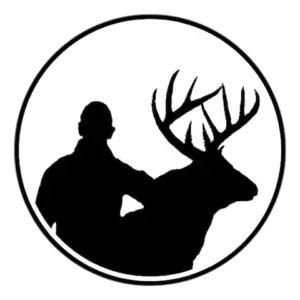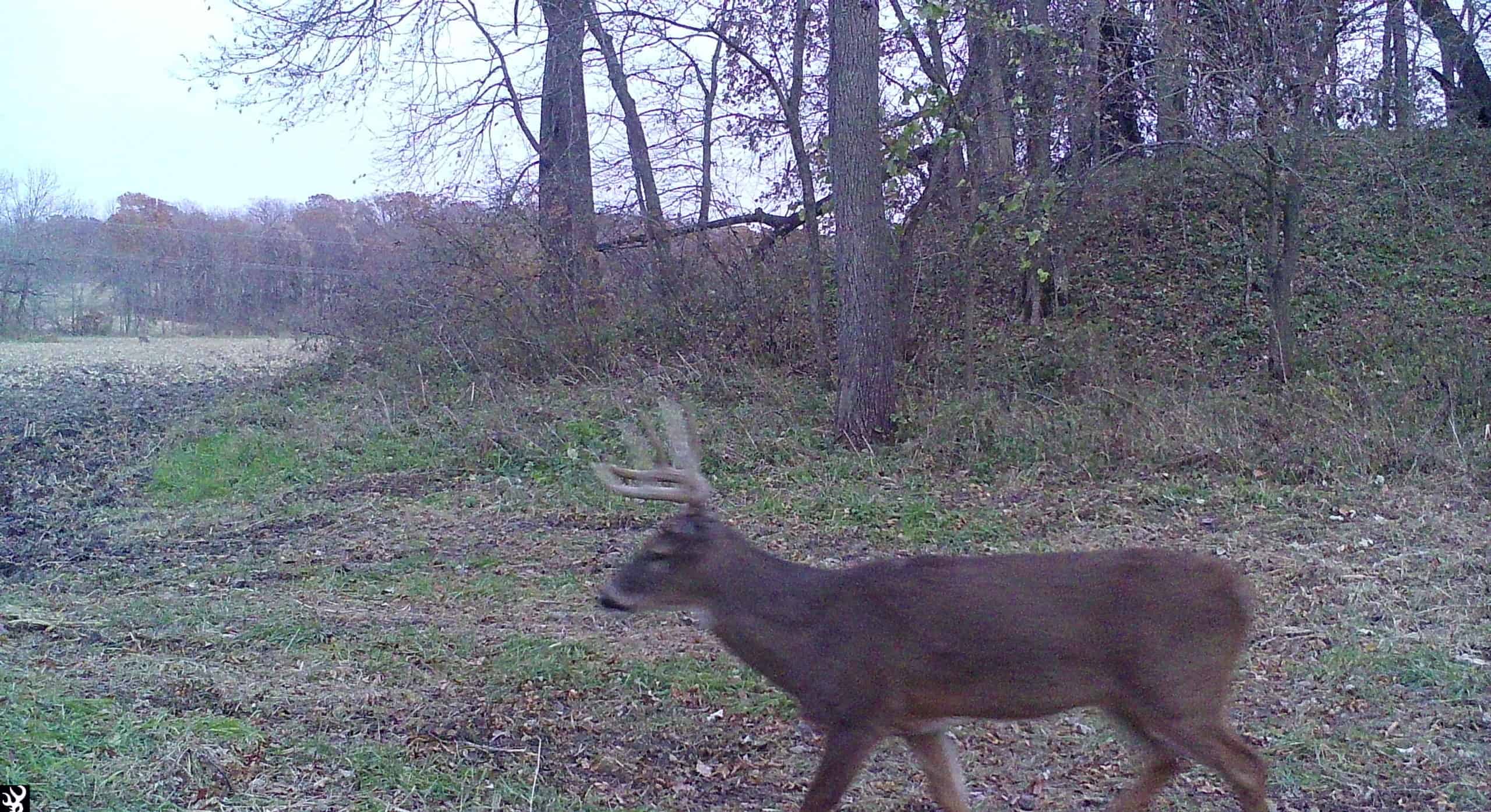Understanding how mature bucks behave will help you become a more successful hunter. Mature bucks live their lives in a completely different way from young bucks and does. If we can recognize how mature bucks live their lives, we can make better decisions as hunters to increase our odds of harvesting mature bucks more regularly. A valuable piece information to understand about mature bucks is how far they bed from food.
In areas that bucks associate with safety, they will bed as close to food as possible. Deer want to conserve energy, so they will bed within the middle of food sources if given the right set of conditions. Mature bucks value safety above everything else, therefore they will commonly bed far away from food sources that are pressured by humans or other predators. Bucks will travel 5 miles to food sources if they need to.
It’s important to recognize that bucks have their own individual personalities just like dogs do. Some bucks will tolerate danger from human pressure more than others. They also have preferences when it comes to choosing their bedding area habitat. For example, some bucks might like bedding within wooded cover and others might prefer bedding in grassy fields like CRP or switchgrass.
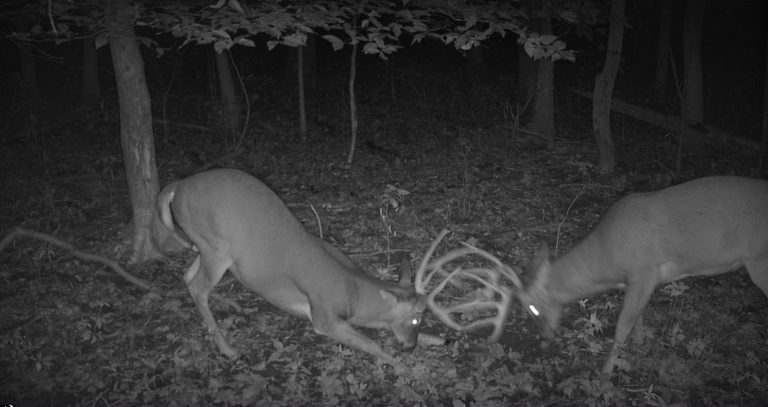
Bucks can also be territorial which can influence how far specific bucks will bed from food. If a dominant buck likes to fight and keep other bucks out of his primary food sources, non-dominate bucks might be forced to bed further away from these food sources to avoid the dominant buck. Non-dominant bucks might only feed within food sources under the cover of darkness when hunters can’t kill them and when dominate bucks have already left the area.
Human pressure is one of the biggest influences of how far mature bucks bed from food. The majority of mature bucks don’t tolerate human pressure, and they are extremely good at recognizing that pressure. A buck doesn’t even need to see you to know that you are intruding on a particular area. The scent you leave behind on the ground can last for days after you leave an area, and that’s enough information for a mature buck to learn that he needs to avoid an area or be cautious when walking through it. And when he does walk through that area, he will likely do it at nighttime if your human pressure happened within the last few weeks.
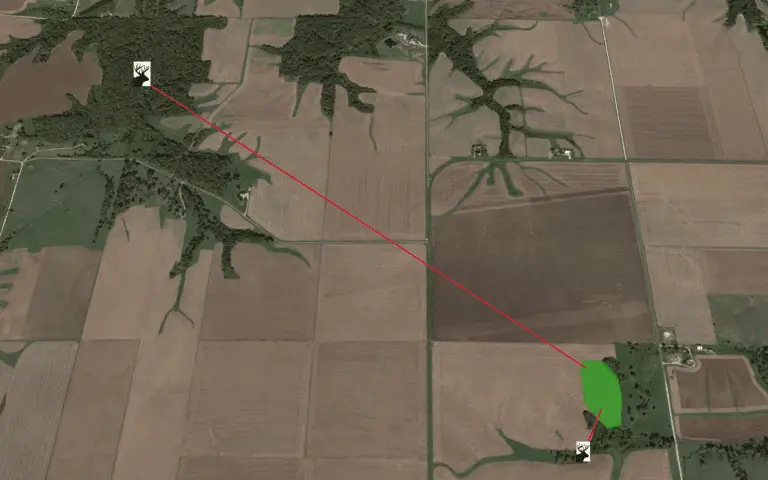
How far will bucks travel to food?
As I mentioned earlier in this article, there are various factors that influence how far a buck will bed from food. However, we probably need to ask this closely related question to completely cover this topic. How far will bucks travel to food?
Bucks have no problem traveling five miles or more to food sources. Deer prefer to conserve their energy whenever possible, therefore bucks will seek food sources that are relatively close to their bedding area. In most cases, this means that bucks are bedded within 0 – 200 yards from food sources.
It’s important to distinguish the types of food sources that deer travel to. For example, native browse is a large percentage of a deer’s diet. Not all parts of the country have large agriculture fields or big food plots for deer. We typically call these large agriculture fields, or food plots, destination feeding areas. If we asked how far bucks travel to “food” it’s a little different than asking how far bucks will travel to destination feeding areas. Food is anything that deer will eat, not necessarily a food plot.
Destination feeding areas are usually in wide open fields or food plots where deer have to leave the security of their bedding areas. Whereas native browse is “food” that is commonly available within the security of a buck’s bedroom. Destination feeding fields that are over 10 acres or more in size have excellent drawing power and can attract deer from 20+ miles away. This is especially true when weather temperatures are severely cold and deer are seeking out foods that are high in carbohydrates for survival.
You have to manage your human pressure if you want to see mature bucks using destination feeding fields during daylight hours. Destination food sources can be highly attractive. However, that attraction might increase your odds of spooking deer and forcing them to bed further away. A mature buck doesn’t want to leave the security of cover and expose himself out in the open unless he feels safe to do so. Therefore, you have to manage human pressure around destination feeding fields if you want to increase your odds of seeing him during daylight hours.
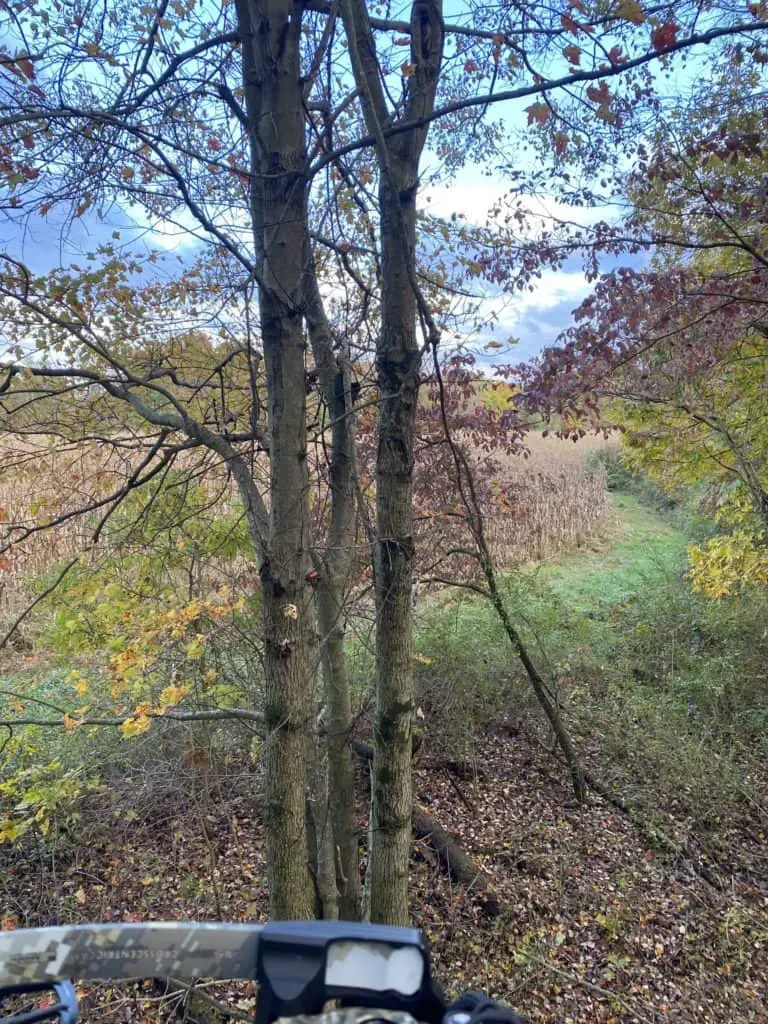
The distance that bucks travel to food also depends on the habitat of the area. For example, if a bucks entire home range consists of mostly timbered forest, then he probably doesn’t need to travel very far to feed unless there is a reason for him to do so. If a buck’s home range offers the same level of protection and the same food sources on one end of his range as it does on the other end, he has no reason to travel far distances from bedding to food.
There are two things you need to provide a buck to get him to bed near food, and keep him coming back to that food all year. The first is security cover. You have to know how to make a deer feel safe. The second is a variety of foods that peak in attraction at different times throughout the year. If you offer bucks these two things you will have an excellent opportunity at harvesting them.
There is one last point I want to make clear. You need to hunt bucks on the property where they are bedded during daylight hours, or very close to it. If you have food but not bedding nearby, you might need to rethink your strategy. Every property is different and unique from the next. However, make sure you know what makes a good deer bedding area so that you can have the confidence to know that a mature buck is bedded close enough to where you hunt.
Conclusion
Bucks can have small or large home ranges. Every individual buck and the property we hunt them on is unique. Therefore, bucks might choose to bed directly within a food source and not move much at all during daylight. On the other hand, a buck might travel miles to eat if needed, and even decide to do it during daylight hours.
A buck’s primary concern is his safety. Therefore, he will find the closest bedding area to food sources that he considers safe from human pressure, or the pressure from dominant bucks. In some parts of the country this might mean he only need to travel several hundred yards away and in others he will travel five miles or more to eat.
